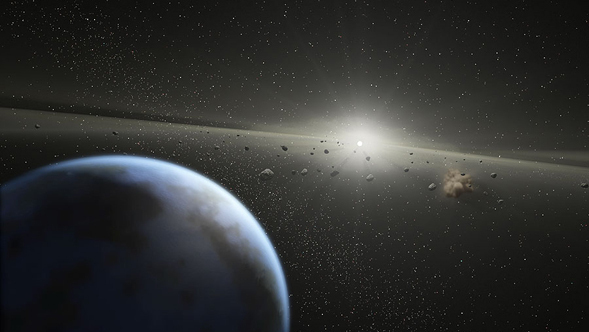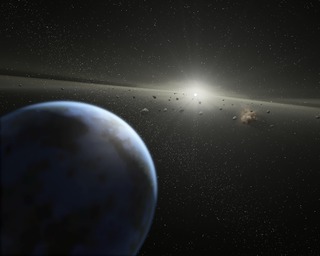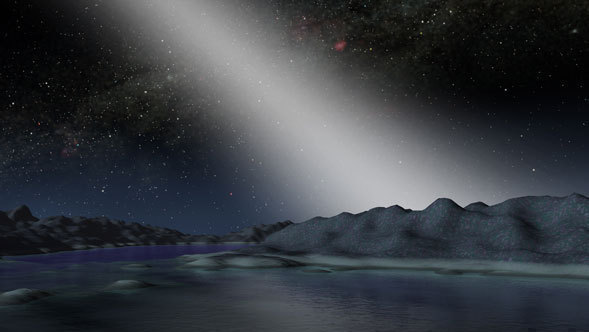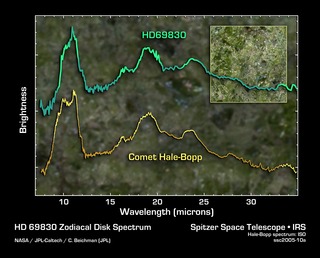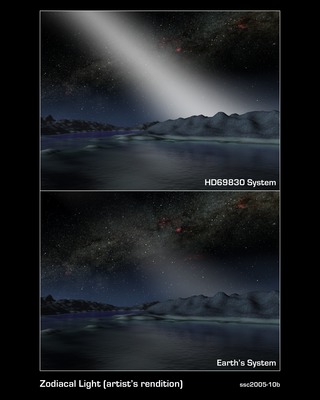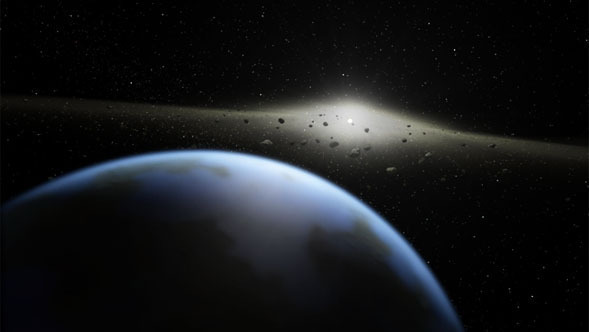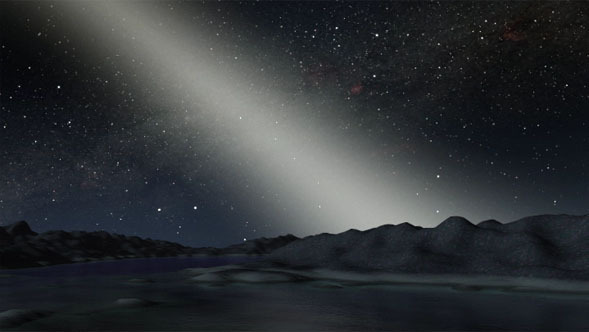
Credit: NASA/JPL-Caltech/T. Pyle (SSC)
Artwork • April 20th, 2005 • ssc2005-10c
ssc2005-10c
This artist's concept show a massive asteroid belt in orbit around a star the same age and size as our Sun. Evidence for this possible belt was discovered by NASA's Spitzer Space Telescope when it spotted warm dust around the star, presumably from asteroids smashing together.The view is from outside the belt, where planets like the one shown in the foreground, might possibly reside. A collision between two asteroids is depicted to the right. Collisions like this replenish the dust in the asteroid belt, making it detectable to Spitzer.The alien belt circles a faint, nearby star called HD 69830 located 41 light-years away in the constellation Puppis. Compared to our own solar system's asteroid belt, this one is larger and closer to its star -- it is 25 times as massive, and lies just inside an orbit equivalent to that of Venus. Our asteroid belt circles between the orbits of Mars and Jupiter.Because Jupiter acts as an outer wall to our asteroid belt, shepherding its debris into a series of bands, it is possible that an unseen planet is likewise marshalling this belt's rubble. Previous observations using the radial velocity technique did not locate any large gas giant planets, indicating that any planets present in this system would have to be the size of Saturn or smaller.Asteroids are chunks of rock from "failed" planets, which never managed to coalesce into full-sized planets. Asteroid belts can be thought of as construction sites that accompany the building of rocky planets.
About the Object
- Name
- HD 69830
- Type
- Planet > Type > Terrestrial
- Star > Circumstellar Material > Disk > Debris
- Star > Circumstellar Material > Planetary System
